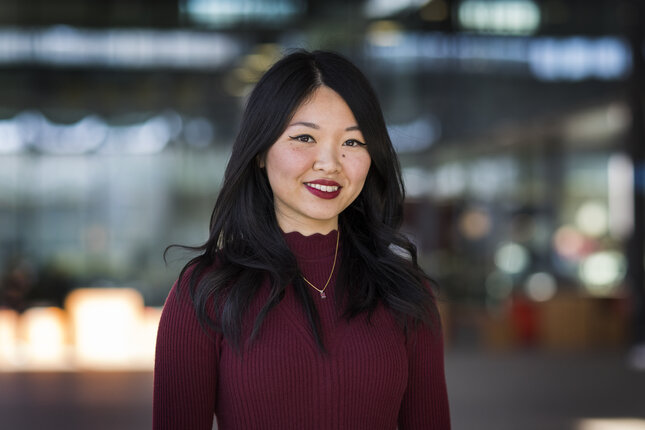Co-creation can serve as the catalyst for the most innovative outcomes. Here’s how.
Shelly Tsui defended her PhD thesis at the Department of Industrial Engineering and Innovation Sciences on November 16th.

Ever heard the tales of companies convinced they had a groundbreaking product, only to ‘forget’ to check with the end user if there’s even a demand for it? Many businesses get stuck in a linear thought process, thinking they are the experts and missing out on the potential of engaging end users and other stakeholders. It’s a missed opportunity, as co-creation often leads to novel and better-aligned outcomes. Shelly Tsui, a final-year doctoral researcher at Eindhoven University of Technology (TU/e), is no stranger to the concept of co-creation; it forms the backbone of her research.
Today, you defended your thesis. Were you nervous?
“I’m very excited. It will be really nice to have a wrap-up and share with many people what I’ve been doing for the last five and a half years.”
Creating value through co-creation. Can you explain that to us?
“Depending on who you ask, for example, designers or business strategists, you will get a slightly different answer. But in general, co-creation happens when a group of people from different backgrounds come together to work on something that has some value to them.”
Do a lot of different companies and organizations these days already see value in co-creation?
“Absolutely. From a commercial perspective, a lot of popular businesses, like Lego, Starbucks, and Ikea, base their strategy on co-creation. Customers take charge of a lot of the things going on. One of the reasons people go back to Ikea, for example, is because they feel connected to the product, partly because they enjoy ‘building’ the product themselves. They felt included in the process. In other words, a feeling of value was created because the customer interacts with the services of Ikea.”
Another example: A while ago, citizens of Eindhoven were involved in creating smart energy and lighting solutions for their neighborhood: Lighting Up the City. They worked together with companies, the municipality, and designers. Essentially, they helped improve their own quality of living. As you can see, there are many different ways in which co-creation can be put into practice.”
Let’s take the medical world as an example. Medtech companies constantly try to come up with ways to innovate the sector. How would co-creation look like in this context?
“For example, if you’re a startup in the medical industry, incorporating the end-user—in this case, the patient—throughout the whole process, from idea to production, is crucial. Every individual is unique, and overlooking their input can lead to consequences borne by patients.”
Are there challenges involved in co-creation as well?
“Co-creation can be time-consuming. Plus, it can be a very messy process. Therefore, it is not a big surprise that organizations tend to adopt methods that simplify the process (e.g. a linear way of innovation involving four defined stages) which do not capture the complexity of how engagement with different stakeholders can take place.”

Do you have a useful message for companies and organizations if they would apply the concept of co-creation?
“Whether we are talking about the involvement of customers, citizens, or other end-users, it might be helpful to realize that you can’t think about co-creation as a business case. It’s not a linear way of doing things. You can’t just make a prototype, implement it, let people evaluate it, and then think that co-creation has been successful. That is a top-down way of thinking.”
“Stakeholders have to be able to do more than just give feedback. For instance, are citizens involved at the strategic level when a part of the city is changing? Have they been involved in the inception of the project? Have they been there from the beginning? Or were they only added near the end when the project was already settled?”
“I would love to see more companies and organizations implementing co-creation in a way that supports end-user inclusion at the very start of initiatives, or better, let end-users take the lead on strategic decisions alongside the project coordinators.”
What are you going to do after you officially complete your PhD?
“I have decided I want to step outside of academia. I would like to apply my insights about collaboration and co-creation in companies. So, for instance, I am interested in working for management consultancy firms or creative marketing agencies. In their line of work, they are approached by clients to jointly ideate and come up with solutions to problems, which can relate to exploring or creating new kinds of value.”
“Value can take the form of new products and services, but also strategies and policies that address societal issues such as climate change and sustainability. These firms work with a variety of clients such as the government, non-profit organizations, and of course, other businesses.”
“I like the collaborative and research-centered nature of the kind of work, and want to explore in what ways I can put the insights from my dissertation into practice.”
Title of the PhD Thesis: "Beyond the Firm. Value co-creation in societally driven innovation". Supervisors: Isabelle Reymen, Günter Bombaerts, Anna Wieczorek
Latest news


